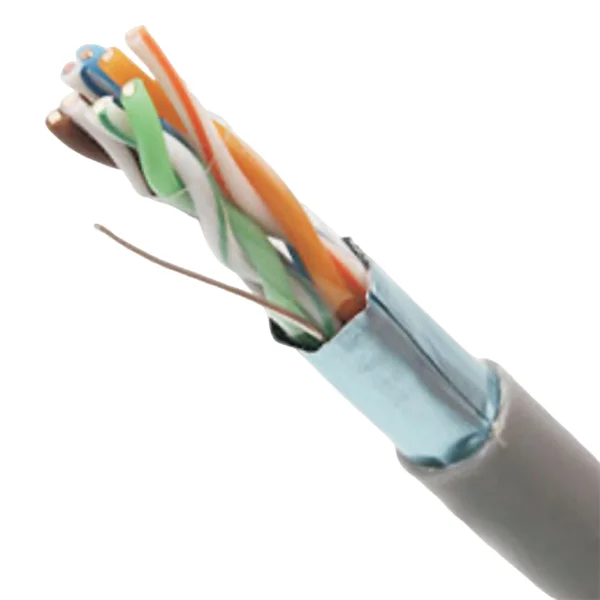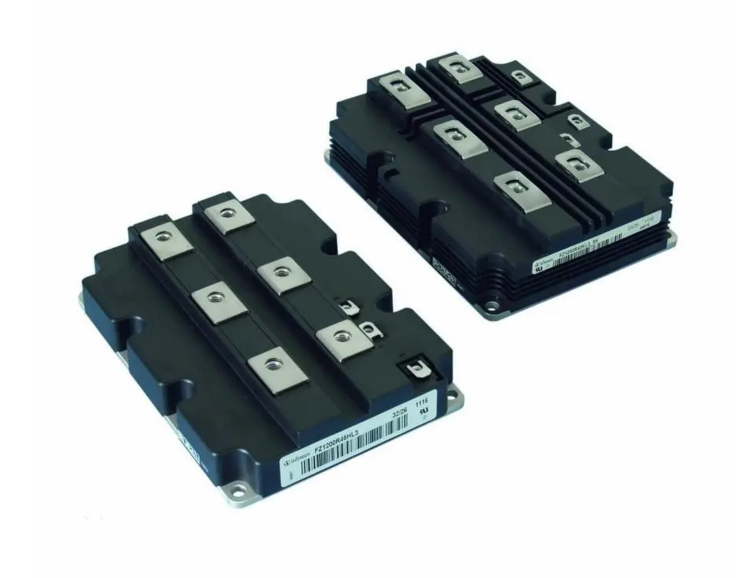The CAT5e F/UTP network cable is a widely adopted structured cabling solution designed for high-speed data communication and signal transmission across business and industrial environments. It belongs to the enhanced Category 5 standard, offering improved performance and reduced interference compared to traditional CAT5 cables.
Built to meet the YD/T 1019-2013 implementation standard, this cable ensures consistent data transfer rates between 1–100/155 MHz, making it suitable for modern Ethernet applications, VoIP, and other bandwidth-intensive systems. In this blog post, Dingliang, a high performance Ethernet network cable manufacturer, will share the technical design of CAT5E F/UTP network cable for sale, its applications, etc.
Construction and Technical Design of CAT5e F/UTP Cable
Every element of the CAT5e F/UTP cable structure contributes to stable and interference-free data transmission. Its design follows stringent electrical and physical specifications to ensure performance and longevity.
-
Conductor: Manufactured with oxygen-free copper and sized between 0.475mm–0.53mm, the conductor provides excellent conductivity and minimal signal loss, supporting longer cable runs without degradation.
-
Shielding: The F/UTP (Foiled Unshielded Twisted Pair) configuration includes an overall aluminum foil layer that surrounds the four unshielded twisted pairs. This foil helps block external electromagnetic interference (EMI) from nearby cables or devices.
-
Sheath Materials: Available in PVC, LSZH (Low Smoke Zero Halogen), or PE outer jackets, the sheath offers flexibility for different environments — from office interiors to outdoor installations or data centers requiring fire-resistant materials.
This structure ensures that the CAT5e F/UTP cable maintains both mechanical strength and electrical reliability even under demanding operating conditions.
Why the F/UTP Design Matters in Network Stability
The F/UTP shielding system is a defining feature that sets this cable apart from unshielded alternatives. By wrapping the cable core in a foil barrier, it minimizes cross-talk and suppresses radio frequency interference (RFI).
In office environments filled with electronic equipment—computers, monitors, and printers—this design reduces noise that could distort or delay data signals. For data centers, the shielding ensures signal integrity across densely packed cable routes. The result is stable performance even when multiple devices are operating simultaneously within high-density wiring infrastructures.

Applications of CAT5e F/UTP Network Cable in Infrastructure
The CAT5e F/UTP network cable is versatile, supporting a range of applications where reliable connectivity and organized cabling are essential.
1. Internal Communication Systems
In corporate networks, this cable connects computers, printers, telephone switches, and copiers, enabling smooth internal communication and data sharing. Its low attenuation and consistent impedance ensure efficient transmission, improving collaboration and office productivity.
2. Conference Room Connectivity
In modern workplaces, conference rooms rely on projectors, speakers, and video conferencing systems that depend on network connections for synchronized operation. Using CAT5e F/UTP cabling minimizes signal delay and transmission errors, allowing real-time presentations, streaming, and communication.
3. Data Center Integration
For data centers, where performance and uptime are critical, the cable’s shielding reduces electromagnetic interference from power lines or nearby devices. It supports the interconnection of servers, storage systems, and network switches, forming a robust backbone for information flow.
Whether used in a small business setup or a large-scale IT facility, CAT5e F/UTP cables maintain dependable connectivity within high-performance networks.
Comparing CAT5e F/UTP to Other Ethernet Cable Categories
When designing or upgrading a network infrastructure, understanding where CAT5e F/UTP stands among other categories is essential.
-
CAT5 vs. CAT5e F/UTP: CAT5e provides enhanced signal performance and better suppression of near-end crosstalk (NEXT), supporting gigabit Ethernet applications more reliably than CAT5.
-
CAT5e F/UTP vs. CAT6: While CAT6 can handle higher frequencies (up to 250 MHz), CAT5e F/UTP remains a cost-effective and efficient option for networks where 1 Gbps performance suffices. Its shielding gives it an advantage over unshielded CAT6 cables in noisy environments.
Thus, CAT5e F/UTP represents the balance between affordability, shielding protection, and performance efficiency for most professional installations.
Environmental Adaptability and Sheath Material Options
Different installation environments demand different levels of protection and safety, which the sheath material variations of CAT5e F/UTP accommodate effectively:
-
PVC (Polyvinyl Chloride): Suitable for indoor installations, offering flexibility and cost-effectiveness.
-
LSZH (Low Smoke Zero Halogen): Ideal for enclosed areas such as offices or data centers where fire safety and minimal smoke emission are priorities.
-
PE (Polyethylene): Designed for outdoor use, resistant to moisture and UV radiation, ensuring long-term durability in exposed environments.
By selecting the appropriate sheath material, installers can ensure compliance with safety standards and optimize network longevity.
Transmission Reliability and Performance Parameters
With a transmission range of 1–100/155 MHz, CAT5e F/UTP cables easily support Fast Ethernet and Gigabit Ethernet. Their low insertion loss and controlled impedance help maintain clear signal transmission across extended distances.
The oxygen-free copper conductors significantly reduce resistance and heat buildup, improving overall transmission efficiency. Combined with precise twisting of pairs, this design minimizes both external and internal noise — crucial for consistent, high-speed data transfer.
Installation and Maintenance Considerations
Installing CAT5e F/UTP cables requires careful attention to avoid compromising performance. Proper grounding of the foil layer and maintaining appropriate bend radius are essential for optimal shielding effectiveness.
Once installed, the cables demand minimal maintenance, but regular inspection for physical damage, connector corrosion, or cable stress ensures prolonged service life. Adhering to structured cabling standards during installation also facilitates easier troubleshooting and future upgrades.
Future Relevance of CAT5e F/UTP Cables
Even as network technology advances, CAT5e F/UTP cables continue to serve as a practical solution for small-to-medium enterprises, educational institutions, and commercial networks. They support the bandwidth needs of most business operations—ranging from VoIP systems and surveillance networks to cloud-based applications—without requiring the higher cost of next-generation cabling.
Moreover, their compatibility with legacy and modern Ethernet equipment ensures a smooth transition path for organizations planning phased upgrades toward higher-speed systems.
Conclusion
The CAT5e F/UTP network cable stands out as a reliable and efficient communication medium in modern network infrastructures. With its oxygen-free copper conductors, foil shielding, and adaptable PVC/LSZH/PE sheath materials, it offers a balanced combination of performance, safety, and cost-effectiveness.
From corporate networks to data centers, this cable ensures seamless connectivity, stable transmission, and long-term reliability—making it a cornerstone for intelligent communication systems in today’s connected world.
www.dlelectronic.com
Dingliang

